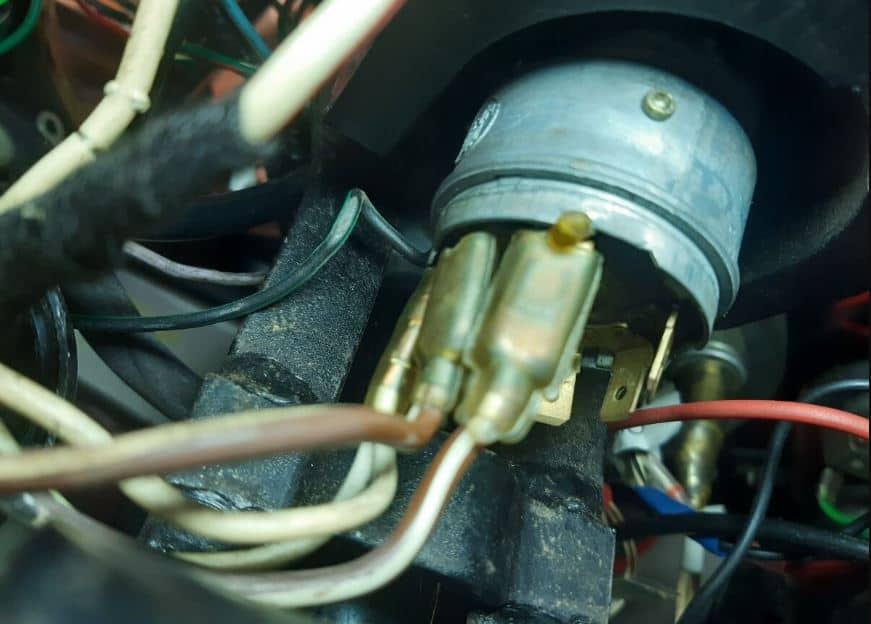The ignition switch is a very simple device that transfers power from the vehicle’s battery to the vehicle’s starter and other components.
The accessory, start, battery, and ignition input terminals on the ignition switch all need wiring. Although their placement varies from vehicle to vehicle, the start function is often reserved for the terminal in the center.
Most of us know how the ignition switch works, but wiring it is another matter. We’ve created a thorough tutorial explaining how to do it to assist you in appropriately installing the ignition switch.

Which Cables connect to an Ignition Switch?
Before getting into the technicalities of wiring an ignition switch, let’s quickly explore the purpose of the wires that lead to it.
The 4-wire ignition switch is the industry standard, with three terminals arranged in a circle and a fourth termination in the center. Certain switches may have more than four connection points, although they are often not utilized.
The following four wires connect the ignition switch:
- The battery wire.
- The accessories wire.
- The starter wire.
- The ignition system wire.
The battery cable is required to provide electricity to the ignition switch, which will then relay the signal to other components so they can start working.
Thanks to the accessories wire, the ignition switch controls the accessories, including the radio, dashboard lighting, and headlights. As a safety measure, some features are disabled while the key isn’t present to avoid a quick battery depletion.
The starting wire turns on the power flow to the starter, exciting the magnetic field to get it ready to start the engine.
The ignition wire, which links to the ignition coil and starts the engine while turning on the gasoline supply and the other components, completes the system.
How to Correctly Wire an Ignition Switch
Proper wiring must also be done, and understanding where each ignition switch wire comes from is the first step.
Remember that one of the wires goes to the battery before you begin joining them, so unplug the battery terminals to prevent any safety issues or unintentional engine starting.
The following are the procedures to wire the ignition switch:
- When the car is in park gear, disconnect the battery wires.
- Ensure the switch is turned off by turning the key as far anticlockwise as possible before inserting it.
- Remove the key, then relocate the ignition switch near the steering column cables.
- The “BAT” connector, often found at the bottom, should be connected to the yellow battery line.
- The “ACC” terminal is located on the top side of the ignition, where the red accessory wire should be connected.
- The “IGN” terminal, located on the other side of the accessory terminal, should be connected to the blue ignition wire.
- The “ST” terminal, located in the middle of the switch, should receive the green startup wire.
- Reconnect the battery wires and listen for any strange behavior, like the starting making noise or the headlights going on.
- Start the engine and cycle through the settings to test the ignition switch.
FAQs
What shade wires are connected to the ignition switch?
Various functions are represented by various colors on the ignition switch’s cables: red, green, blue, and yellow.
Which wire is the ignition wire?
The center of the ignition switch is connected via the ignition wire, which should be blue.
What wire connects the starter to the ignition?
The starter wire, which connects the “ST” terminal of the ignition switch to the engine starter, should be green in color.
What color codes apply to wires?
Phase 1 – Black colored wire
Phase 2 – Red-colored wire
Phase 3 – Blue colored wire
Neutral – White-colored wire
Ground – Green, yellow, or bare wire
Is the auxiliary wire the same as the ignition wire?
Being careless with the accessory and ignition wires might endanger the automobile and your safety.
The accessory wire should be red, and the ignition wire should be blue, although the colors may vary depending on the manufacturer.
What source of electricity does the ignition switch used?
The battery powers the ignition switch through the cable attached to the bottom side of the ignition switch’s back.
Why doesn’t my ignition switch have power?
Like the rest of the car, the ignition switch needs battery power while the engine is off. Inspect the battery charge first to ensure it is functioning properly, then the ignition lock, and finally, the ignition switch to ensure it is functioning properly.
Summary
As you can see, the four wires connecting to the ignition switch connect the battery, starter, accessories, and ignition coil.
During pretty straightforward wiring, you must match the wire’s color to the appropriate ignition switch terminal. The relevant wire color codes and setup instructions may be found in the mechanic’s handbook for your car.

